Latch and Flip-Flops
SR Latch (NOR-based)
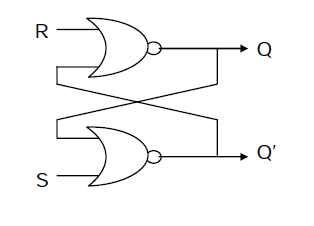
Figure 1: NOR-based SR Latch circuit diagram showing cross-coupled NOR gates with S (Set) and R (Reset) inputs. Reference: Basic latch implementation
An SR latch is a basic memory element that can store one bit of information. It can be constructed from a pair of cross-coupled NOR logic gates. The stored bit is present on the output marked Q, while Q' represents the complement of Q. This latch has two control inputs: S (Set) and R (Reset).
Operation Principle
- Hold State: When both S and R inputs are low (0), the latch maintains its current state through cross-coupled feedback
- Set State: When S is high (1) and R is low (0), the output Q is forced to high (1)
- Reset State: When R is high (1) and S is low (0), the output Q is forced to low (0)
- Invalid State: When both S and R are high (1), both outputs become low, violating the complementary relationship
Logic Equations
For NOR-based SR Latch:
Where:
- is the current output state
- is the complement of
- is the Set input
- is the Reset input
Truth Table
| S | R | Q | Q' | State |
|---|---|---|---|---|
| 0 | 0 | Q | Q' | Hold (No Change) |
| 1 | 0 | 1 | 0 | Set |
| 0 | 1 | 0 | 1 | Reset |
| 1 | 1 | 0 | 0 | Invalid |
Key Features
- Basic bistable memory element
- Asynchronous operation (no clock required)
- Two stable states for storing binary information
- Forms the foundation for more complex memory circuits
- Invalid state occurs when both inputs are active
Applications
- Basic memory storage in digital circuits
- Foundation for building flip-flops
- Control circuits and state machines
- Temporary data storage in processors
SR Latch (NAND-based)
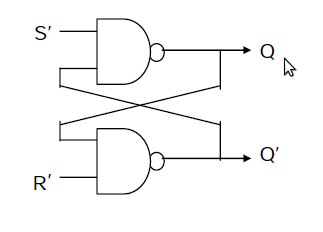
Figure 2: NAND-based SR Latch circuit diagram showing cross-coupled NAND gates with active-low S' and R' inputs. Reference: Alternative latch implementation
This is an alternate implementation of the SR latch built with NAND logic gates. Set and reset now become active low signals, denoted S' and R' respectively. The operation is identical to the NOR-based SR latch, but with inverted control signals.
Operation Principle
- Hold State: When both S' and R' inputs are high (1), the latch maintains its current state
- Set State: When S' is low (0) and R' is high (1), the output Q is forced to high (1)
- Reset State: When R' is low (0) and S' is high (1), the output Q is forced to low (0)
- Invalid State: When both S' and R' are low (0), both outputs become high, creating an invalid condition
Truth Table
| S' | R' | Q | Q' | State |
|---|---|---|---|---|
| 1 | 1 | Q | Q' | Hold (No Change) |
| 0 | 1 | 1 | 0 | Set |
| 1 | 0 | 0 | 1 | Reset |
| 0 | 0 | 1 | 1 | Invalid |
Logic Equations
For NAND-based SR Latch:
Where:
- is the active-low Set input
- is the active-low Reset input
- The operation is equivalent to NOR-based latch with inverted inputs
Key Features
- Active low control signals
- Equivalent functionality to NOR-based SR latch
- Historically more prevalent in digital systems
- NAND gates are often easier to implement in integrated circuits
Gated SR Latch
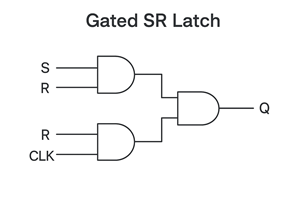
Figure 3: Gated SR Latch circuit diagram showing the addition of enable input for controlled operation. Reference: Circuit implementation
The Gated SR Latch is an enhancement of the basic SR latch that includes an enable (EN) or clock (CLK) input. This addition provides better control over when the latch can change state, making it more suitable for synchronous digital systems.
Operation Principle
- Disabled State: When EN = 0, the latch is disabled and maintains its current state regardless of S and R inputs
- Enabled State: When EN = 1, the latch operates like a normal SR latch based on S and R inputs
- Transparent Mode: While enabled, changes in S and R inputs immediately affect the output
Truth Table
| EN | S | R | Q | Q' | State |
|---|---|---|---|---|---|
| 0 | X | X | Q | Q' | Hold (Disabled) |
| 1 | 0 | 0 | Q | Q' | Hold (No Change) |
| 1 | 1 | 0 | 1 | 0 | Set |
| 1 | 0 | 1 | 0 | 1 | Reset |
| 1 | 1 | 1 | X | X | Invalid |
Logic Equations
For Gated SR Latch:
Where:
- is the Enable/Clock input
- is the Set input
- is the Reset input
- When , the latch holds its previous state
- When , it behaves like a normal SR latch
Key Features
- Controlled operation through enable input
- Bridge between asynchronous latches and synchronous flip-flops
- Level-triggered operation (transparent when enabled)
- Foundation for edge-triggered flip-flops
- Eliminates unwanted state changes when disabled
Applications
- Building block for flip-flops
- Temporary data storage with controlled access
- Interface between asynchronous and synchronous circuits
- Memory elements in simple digital systems
JK Flip-Flop
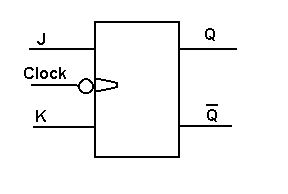
Figure 4: JK Flip-Flop circuit diagram showing the internal structure with master-slave configuration. Reference: Circuit implementation
The JK flip-flop is an improved version of the SR flip-flop that eliminates the invalid state problem. It has two data inputs J and K, along with a clock input for synchronous operation. The JK flip-flop can perform all four basic operations: hold, set, reset, and toggle.
Operation Principle
- Hold: When J = 0 and K = 0, the output remains unchanged
- Set: When J = 1 and K = 0, the output Q becomes 1
- Reset: When J = 0 and K = 1, the output Q becomes 0
- Toggle: When J = 1 and K = 1, the output toggles to its complement
Truth Table
| J | K | CLK | Q(n+1) | Operation |
|---|---|---|---|---|
| 0 | 0 | ↑ | Q(n) | Hold |
| 1 | 0 | ↑ | 1 | Set |
| 0 | 1 | ↑ | 0 | Reset |
| 1 | 1 | ↑ | Q'(n) | Toggle |
Characteristic Equation
Key Features
- Eliminates the invalid state of SR flip-flop
- Edge-triggered operation for synchronous circuits
- Toggle capability makes it versatile for counters
- Can implement any other type of flip-flop
- Most versatile flip-flop design
Applications
- Binary counters and frequency dividers
- State machines and sequential logic
- Memory registers in processors
- Control circuits in digital systems
Master-Slave JK Flip-Flop
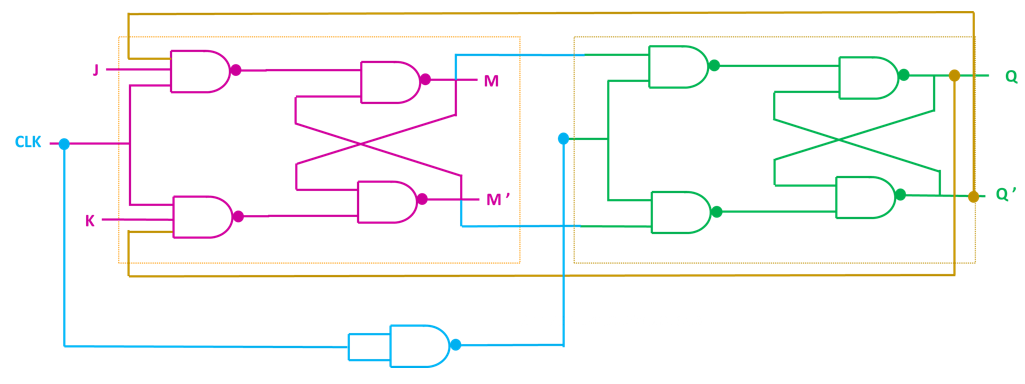
Figure 5: Master-Slave JK Flip-Flop circuit diagram showing the two-stage latch configuration to eliminate race conditions. Reference: Advanced flip-flop implementation
The Master-Slave JK flip-flop consists of two SR latches connected in series to prevent race-around conditions. The master latch is enabled during the positive half of the clock cycle, while the slave latch is enabled during the negative half.
Operation Principle
Positive Clock Edge:
- Master latch accepts J and K inputs
- Slave latch is disabled, maintaining previous output
- Internal signals S_bar and R_bar are generated within the master section
Negative Clock Edge:
- Master latch is disabled, holding its state
- Slave latch transfers the master's state to the output
Internal Signal Relationships
In the master-slave configuration shown:
- S_bar: Internal set signal from master to slave (active low)
- R_bar: Internal reset signal from master to slave (active low)
- Relationship: ,
JK Timing Diagram
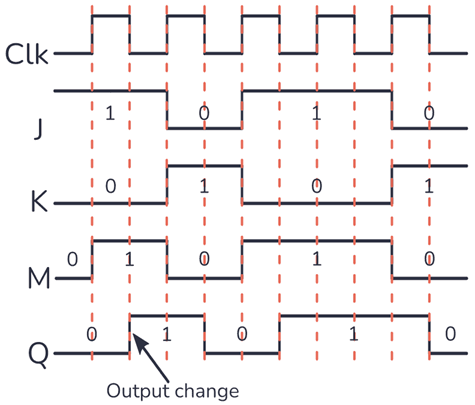
Figure 5a: JK Flip-Flop timing diagram showing the relationship between clock, inputs (J, K), and output (Q) over time. Reference: Timing analysis
The timing diagram shows how the JK flip-flop output changes with respect to the clock and input signals. Key observations:
- Output changes occur on the falling edge of the clock (negative edge triggered)
- J and K inputs are sampled during the positive clock period
- Output is stable during the positive clock period
- Race-around condition is eliminated by the master-slave configuration
Key Features
- Eliminates race-around problems in JK flip-flops
- Edge-triggered operation with well-defined timing
- Internal isolation between input sampling and output changes
- Robust operation in high-speed digital systems
D Flip-Flop
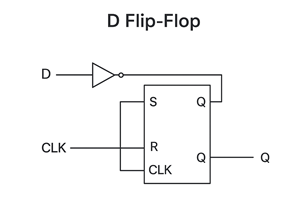
Figure 6: D Flip-Flop circuit diagram showing the simple data transfer mechanism with clock synchronization. Reference: Circuit implementation
A D flip-flop, also known as a "data flip-flop" or "delay flip-flop," is used to store a single bit of data. It has only one data input (D) along with a clock input, making it simpler than the JK flip-flop while eliminating timing issues.
Operation Principle
The D flip-flop transfers the data input to the output on each clock edge. The operation is straightforward:
- When the clock triggers, Q becomes equal to D
- The output remains stable until the next clock edge
- There are no invalid states or race conditions
Truth Table
| D | CLK | Q(n+1) | Operation |
|---|---|---|---|
| 0 | ↑ | 0 | Store 0 |
| 1 | ↑ | 1 | Store 1 |
| X | No Edge | Q(n) | Hold |
Characteristic Equation
Key Features
- Single data input eliminates invalid states
- Simple and reliable operation
- Edge-triggered for synchronous systems
- Excellent for data storage and transfer
- No race conditions or timing issues
Applications
- Data registers and memory units
- Shift registers for serial data processing
- Pipeline stages in processors
- Synchronization of asynchronous signals
- Temporary storage in digital systems
T Flip-Flop
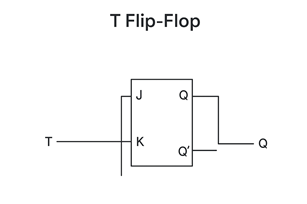
Figure 7: T Flip-Flop circuit diagram showing the toggle mechanism implementation. Reference: Circuit implementation
A T flip-flop, or Toggle flip-flop, changes its output state on each clock pulse when the T input is high. It is particularly useful for frequency division and counter applications.
Operation Principle
- Hold: When T = 0, the output remains unchanged regardless of clock edges
- Toggle: When T = 1, the output toggles (changes to its complement) on each clock edge
Truth Table
| T | CLK | Q(n+1) | Operation |
|---|---|---|---|
| 0 | ↑ | Q(n) | Hold |
| 1 | ↑ | Q'(n) | Toggle |
Characteristic Equation
Key Features
- Simplest flip-flop for toggle operations
- Divides input frequency by 2 when T = 1
- Can be constructed from JK flip-flop (J = K = T)
- Edge-triggered operation
- Essential building block for counters
Applications
- Binary counters and frequency dividers
- Clock generation circuits
- Ripple counters in digital systems
- Pulse shaping and timing circuits
- State toggles in control systems
Conversion from JK Flip-Flop
A T flip-flop can be easily implemented using a JK flip-flop by connecting both J and K inputs together to form the T input:
This configuration ensures that when , both , causing the toggle operation.
Timing Considerations
- Setup Time: T input must be stable before clock edge
- Hold Time: T input must remain stable after clock edge
- Propagation Delay: Time between clock edge and output change
- Maximum Frequency: Limited by internal gate delays
Implementation Variations
- Using JK Flip-Flop: Connect J and K inputs together
- Using D Flip-Flop: Connect output back to D input through XOR gate with T
- Direct Implementation: Custom logic gates for toggle function
Comparison of Flip-Flop Types
| Type | Inputs | Key Feature | Primary Use |
|---|---|---|---|
| SR | S, R, CLK | Basic set/reset | Foundation circuits |
| JK | J, K, CLK | Eliminates invalid state | Universal flip-flop |
| D | D, CLK | Single data input | Data storage |
| T | T, CLK | Toggle operation | Counters, frequency division |
Practical Design Considerations
Timing Parameters
- Setup Time (): Minimum time data must be stable before clock edge
- Hold Time (): Minimum time data must be stable after clock edge
- Propagation Delay (): Time from clock edge to output change
- Clock-to-Output Delay: Specific propagation delay measurement
Power Consumption
- Static Power: Power consumed when flip-flop is not switching
- Dynamic Power: Power consumed during state transitions
- Clock Power: Power consumed by clock distribution network
Metastability
When setup/hold times are violated, flip-flops may enter metastable states:
- Cause: Insufficient setup or hold time
- Effect: Unpredictable output for extended period
- Mitigation: Proper timing analysis and synchronizer circuits
